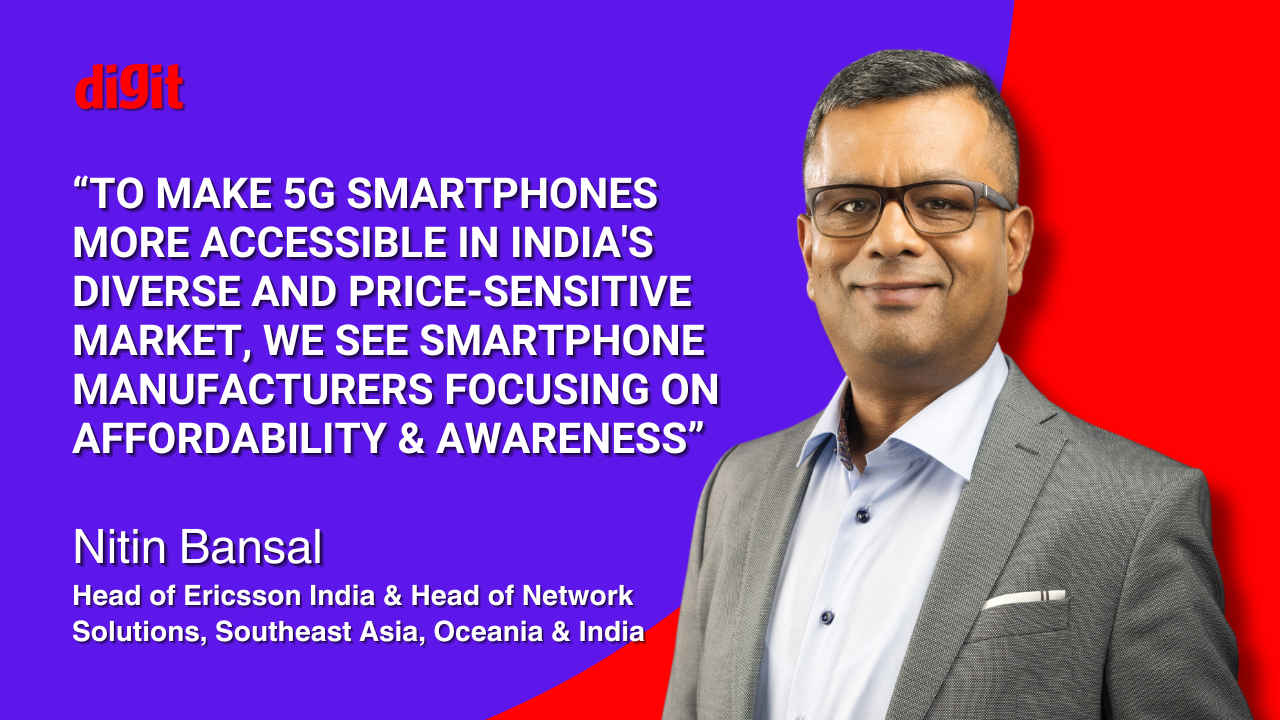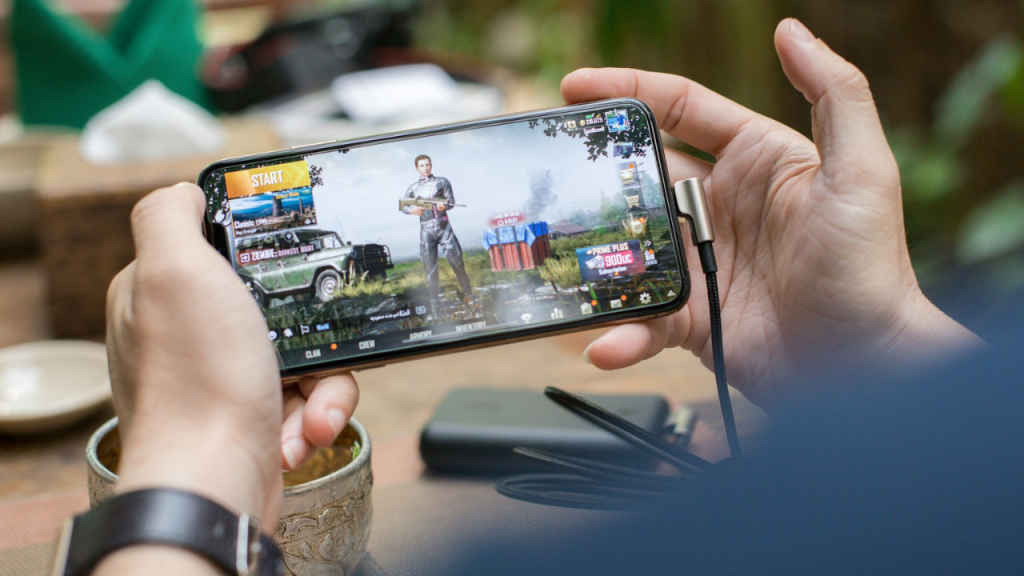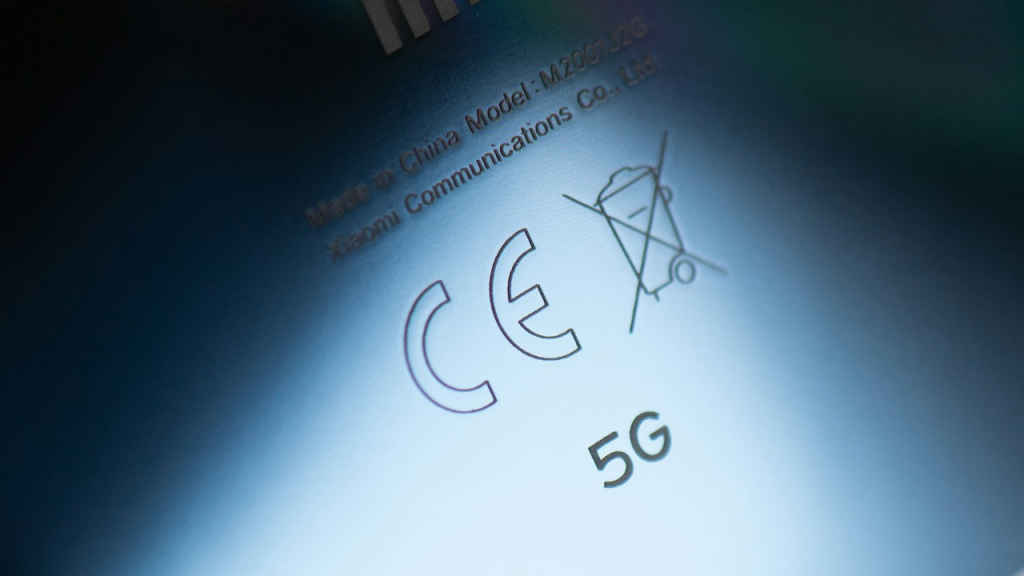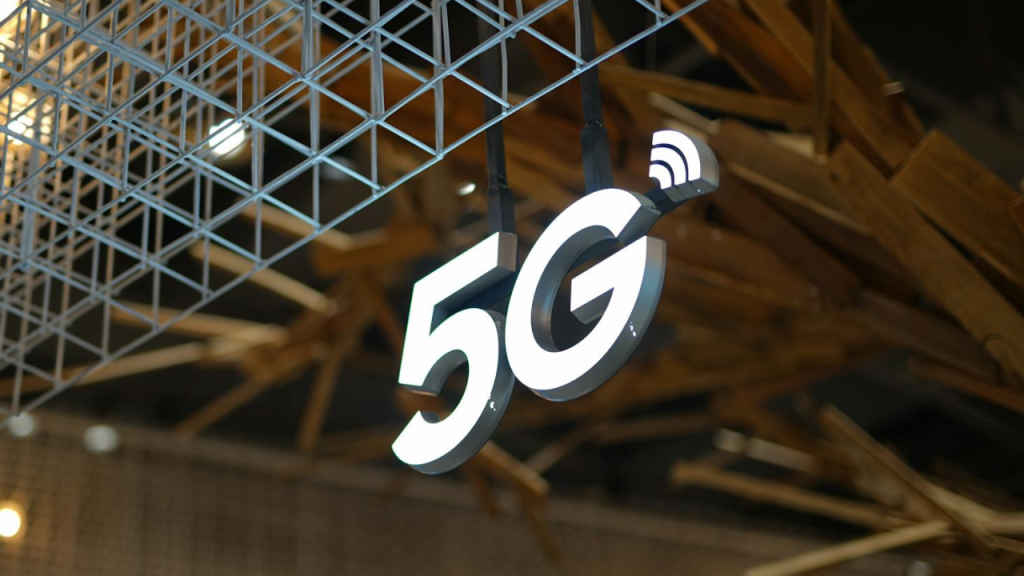5G in India: After 18 crore users, Ericsson’s Nitin Bansal talks next milestones

India’s journey with 5G technology has been nothing short of remarkable since its official launch in October 2022. The rapid deployment and widespread adoption of 5G have set a global benchmark, positioning India as a leader in the next generation of mobile technology. With over 425,000 sites deployed across 738 districts and more than 180 million 5G subscribers, the country’s digital landscape is evolving at an unprecedented pace.
“India’s rapid 5G adoption and consumer engagement highlight its potential for further innovation and growth, setting a benchmark for other markets globally,” according to Ericsson India head Nitin Bansal.
Also read: Want unlimited 5G data? These Jio and Airtel plans offer it even after price hike
Sounds exciting? In order to gain deeper insights into the impact of 5G in India and the path ahead, we conducted an email interview with Nitin Bansal, Head of Ericsson India & Head of Network Solutions, Southeast Asia, Oceania & India. In the edited excerpts that follow, Bansal shares his perspective on the unique 5G trends emerging in the Indian market, the transformative potential of 5G across various sectors, and the strategic steps necessary to make 5G technology accessible and impactful for all even more in the future.
How does 5G adoption and consumer engagement in India compare to other global markets after 20 months? Have any unique trends emerged in India? Additionally, how do you assess the progress made in enhancing gaming experiences since our 2022 discussion?
India’s 5G adoption has been exceptional since its launch in October 2022, with over 425,000 sites deployed across 738 districts, setting a global benchmark for the fastest 5G network rollout. Currently, India boasts over 180 million 5G subscribers, projected to reach 840 million by 2029, representing 65% of all mobile subscriptions according to the latest Ericsson Mobility Report.
According to an Ericsson Study, consumers in India are willing to pay a 14% premium for innovative 5G services. On an average, Indian 5G users spend 2 additional hours per week on enhanced video streaming, gaming, and AR experiences compared to global users. Additionally, 5G Fixed Wireless Access (FWA) is gaining popularity with speed-based tariff plans.

The low latency and high-speed connectivity of 5G have revolutionised gaming in India, delivering seamless multiplayer experiences and enhanced graphics. This has fuelled a surge in mobile gaming in the world’s second-largest gaming market, with high-end AAA titles in high demand. According to Ookla, game latency for both Reliance Jio and Airtel users has seen significant improvement in 2023.
These advancements are set to further boost mobile gaming’s popularity in India which is already growing very rapidly. Overall, India’s rapid 5G adoption and consumer engagement highlight its potential for further innovation and growth, setting a benchmark for other markets globally.
Despite the growth in 5G networks, the perceived lack of widespread 5G use-cases remains a concern. What are your thoughts on this?
Given the initial developments with 5G, the priority is to expand nationwide coverage. However, 5G’s potential extends beyond initial use-cases like eMBB and FWA. The ecosystem players are now collaborating to develop new application-based use cases. As the network matures, we expect a surge in innovative use-cases across industries, including smart manufacturing, telemedicine, and the Internet of Things (IoT). The rollout of 5G infrastructure is just the foundation; its true impact will unfold as businesses and developers leverage its capabilities to create transformative solutions.
To this effect, the DoT has already awarded 100 5G Use Case Labs to educational institutions to cultivate 5G competencies among students and startups. This initiative will help in driving innovations and next generation use cases. We believe 5G use-cases such as digital library, AR/VR shopping, cloud gaming, and 360-degree live streaming amongst others are going to redefine the consumer internet experience.
Given India’s diverse and price-sensitive market, what steps are necessary to make 5G smartphones more accessible?
To make 5G smartphones more accessible in India’s diverse and price-sensitive market, we see smartphone manufacturers focusing on affordability and awareness. Partnerships with telecom operators to bundle 5G phones with attractive data plans, will also encourage adoption. Enhanced 5G coverage in the country will also drive the transition to 4G/5G smartphones. As affordable smartphones become more prevalent and network coverage improves, we anticipate a natural shift towards 4G/5G devices among Indian consumers.

Could you elaborate on the impact FWA has had so far in India and its future trajectory?
Fixed Wireless Access (FWA) has been instrumental in bridging the digital divide in India, especially given the country’s low fibre penetration. By utilising wireless technology to deliver high-speed internet, FWA bypasses the need for expensive and time-consuming physical infrastructure, making it a cost-effective solution for rural and remote areas. This has significantly enhanced digital inclusion, providing reliable connectivity to underserved regions.
Also read: Where does India stand on 5G download and upload speeds?
According to Ericsson’s FWA Handbook 2024 Insights, global FWA connections are expected to grow from 130 million in 2023 to 330 million by 2029, with 85% of these connections over 5G. In India, providers like JioFiber and Airtel Xstream Fibre are expanding their coverage across major cities and towns. Bharti Airtel and Ericsson’s demonstration of 5G FWA functionality on mmWave, achieving peak speeds of 4.7Gbps, highlights the potential for FWA to meet high network capacity requirements.
Looking ahead, FWA’s role in India’s digital landscape will continue to grow, driving digital inclusivity by providing affordable and accessible high-speed internet to more regions. As FWA technology advances and coverage expands, it will play a pivotal role in connecting the unconnected and fostering socioeconomic development across the country.
How do you see 5G impacting operations in sectors beyond consumer tech, such as healthcare, education, and smart cities in India?
5G is set to revolutionise sectors beyond consumer tech in India by enabling advanced applications in healthcare, education, and smart cities. In healthcare, 5G will facilitate telemedicine and real-time health monitoring, improving access to quality care. In February this year, a groundbreaking achievement in medical technology was realised through a pioneering live robotic telesurgery, enabled by 5G connectivity and spanning a distance of over 10,000 kilometres between Orlando, Florida to Dubai, United Arab Emirates.
This feat was made possible through the incredible skills of robotic surgeons; and the integration of advanced robotics with the cutting-edge capabilities of 5G technology. The successful telesurgery demonstrates the potential for advanced technologies to provide equitable access to healthcare services, regardless of geographical constraints. In regions where specialist surgical expertise is scarce, telesurgery could become a lifeline, enhancing patient outcomes and saving lives.
In education, it will support virtual classrooms and immersive learning experiences, bridging the gap for students in remote areas. For smart cities, 5G will enhance infrastructure management, traffic control, and public safety through IoT-enabled devices and real-time data analytics. Overall, 5G’s high-speed connectivity and low latency will drive innovation and efficiency, significantly impacting these critical sectors.

Further, 5G will transform operations across industries such as transportation, mining, manufacturing, and automobiles. It will enable innovations like self-driving vehicles, intelligent traffic management systems, and real-time vehicle tracking. For instance, Telia in Sweden has established a dedicated 5G network for Boliden’s copper mine, while Telefónica, Ericsson, and Mercedes-Benz have collaborated to build the world’s first 5G network for automobile production in Germany. Mercedes-Benz’s “Factory 56” exemplifies future-ready assembly facilities, and Ericsson’s 5G Smart Factory in the US showcases significant productivity improvements through automation and Fourth Industrial Revolution (4IR) technologies.
What would a day in the life of an average Indian in 2030 look like, powered by fully matured 5G technology?
By 2030, 5G technology will be deeply integrated into daily life in India, introducing a range of innovative applications and experiences. The “Internet of Senses” could bring a new dimension to interactions, with 5G-powered smart glasses and augmented reality providing real-time information overlays to enhance visual experiences. Smart fridges connected via 5G could autonomously order groceries based on preferences and dietary needs. Entertainment will be transformed through immersive 5G-enabled virtual and augmented reality, offering advanced gaming and remote social interactions.
As we have all understood by now, the true potential of 5G technology lies not in a single “killer app,” but rather in the multitude of applications it enables. This is a paradigm shift from previous generations of wireless technology, which were often defined by one or two key applications. With 5G, the possibilities are virtually limitless, spanning across various industries and sectors, from healthcare and education to entertainment and transportation.
When it comes to 5G, I think it’s important to highlight the concept of 5G use places. The term “use places” refers to the specific locations or environments where 5G technology can be implemented to create value. This could be anything from a busy city centre, where 5G can help manage traffic and infrastructure, to a remote rural area, where 5G can provide high-speed internet access that was previously unattainable.
While for consumers, 5G could mean faster download speeds, smoother video streaming, and more responsive gaming. For businesses, it could mean more efficient operations, improved customer service, and new opportunities for innovation. And for society, it could mean smarter cities, improved public services, and greater digital inclusion.
In conclusion, the value of 5G comes from its versatility and wide-ranging applicability. By considering both the use cases and the use places of 5G, we can better understand its potential and work towards realising its full benefits.
Also read: Beware! Having multiple SIM cards could land you in trouble: Check your numbers now
Jayesh Shinde
Executive Editor at Digit. Technology journalist since Jan 2008, with stints at Indiatimes.com and PCWorld.in. Enthusiastic dad, reluctant traveler, weekend gamer, LOTR nerd, pseudo bon vivant. View Full Profile




